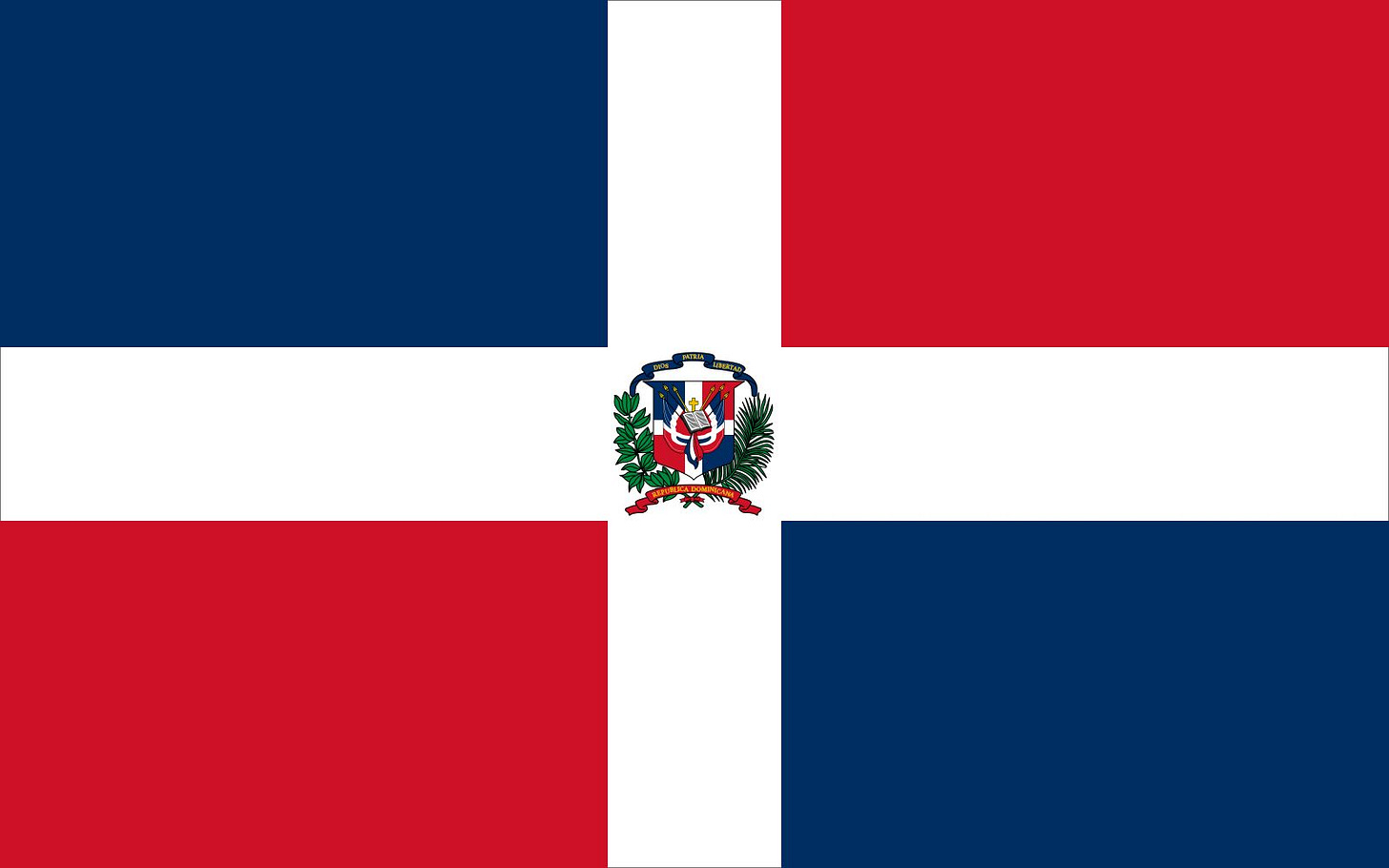The date representing the throwing off the repressive yoke of colonial rule holds a special place in the hearts of many nations. Americans, of course, had a whole declaration written about it for 4 July 1776. Similar national days exist for many other countries, including Waitangi Day in New Zealand or National Foundation Day in Japan. Sometimes a country will declare independence only to be reconquered or otherwise subsumed by another country later. That’s what happened to the Dominican Republic, which declared independence from Haiti on this date, 27 February 1844, but things soon went wrong.
Europeans first encountered the island of Hispaniola in 1492 on Columbus’s first journey. The island had been inhabited by the native Taino (a subset of the Arawak people) for more than 2500 years, who had themselves supplanted another native group who had arrived on the island 6-7000 years ago (or roughly 3500 years before the Taino). Though Columbus founded a settlement upon his arrival, it floundered (and its inhabitants slaughtered by the native Taino). By 1496 Spain had heard of gold deposits on the south of the island and founded the city of Santo Domingo, making it the oldest permanent city established by Europeans in the Western Hemisphere.

Spain imprinted itself on the new colony quickly, founding churches, monasteries, hospitals, and in 1538 (by papal bull), the first university in the hemisphere – the Universidad de Santo Tomás de Aquino (St. Thomas Aquinas University). It also imposed Catholicism, a rigid class-based society, and brutal slavery, all of which dominated for hundreds of years. In 1795 Spain ceded the eastern two-thirds of the island to France, which had controlled the western portion (Haiti) since 1697. Haiti revolted in 1791, and became independent on 1 January 1804 after the long, bloody fight led by Toussaint Louverture and his successor Jean-Jacques Dessalines.
In the process, Haiti became the first independent nation in Latin America or the Caribbean, the second republic in the Americas (after the United States), the first country in the Americas to eliminate slavery, and the only state in history established by a successful slave revolt. Fresh off that high, Haiti invaded the other part of Hispaniola and for the next roughly two decades fought for control amongst the French, British, and Spanish. Spain even ruled again briefly from 1809 to 1821, when a group of Dominicans declared independence as the Republic of Spanish Haiti. That didn’t last long, however, as Haiti again invaded in 1822, beginning another two decades of tumultuous rule. Under the Haitian president, Haitians (who spoke French) monopolized government power, severed Catholic ties to Rome, forced out the traditional Dominican rulers (who spoke Spanish), and tried wiping out most of the other traces of European and Hispanic traditions. The clash of the cultures (perhaps similar to conflicts between English-speaking Americans and Spanish-speaking Mexicans) did not sit well with Dominicans.
In 1838 Juan Pablo Duarte founded a secret society called La Trinitaria (“The Trinity”) to foment rebellion in three-person resistance cells. On 27 February 1844, 100 members of La Trinitaria stormed Puerta del Conde, the main entrance to the fortified city of Santo Domingo. Duarte and his followers drove out the Haitians from the city and raised the blue, red, and white flag of the Dominican Republic which the country still flies.
However, Duarte and many of his compatriots were forced into exile and the Dominican side of the island was subjected to a long series of military strongmen and even more instability as they fought to maintain their independence from Haiti. For the next hundred years there was a serious lack of economic growth and democracy, which has seen a mix of coups, dictatorships, both Spanish and US military interventions and occupations, and, finally democratic governments and free elections since 1978. Today, the Dominican Republic has a prosperous economy and population, and is a major tourist destination – one of the most visited destinations in the Caribbean – due to year-round golf, ecological diversity, and having the Caribbean's tallest mountain peak, the largest lake, and lowest point. It took a long time to get that real independence, and Dominicans and the wider world aren't taking it for granted.




